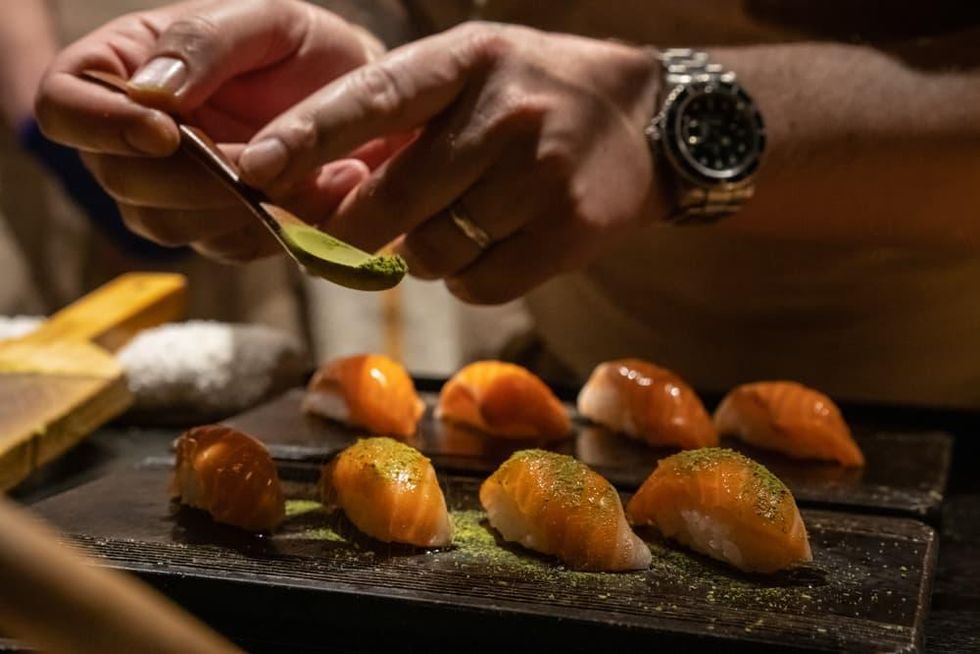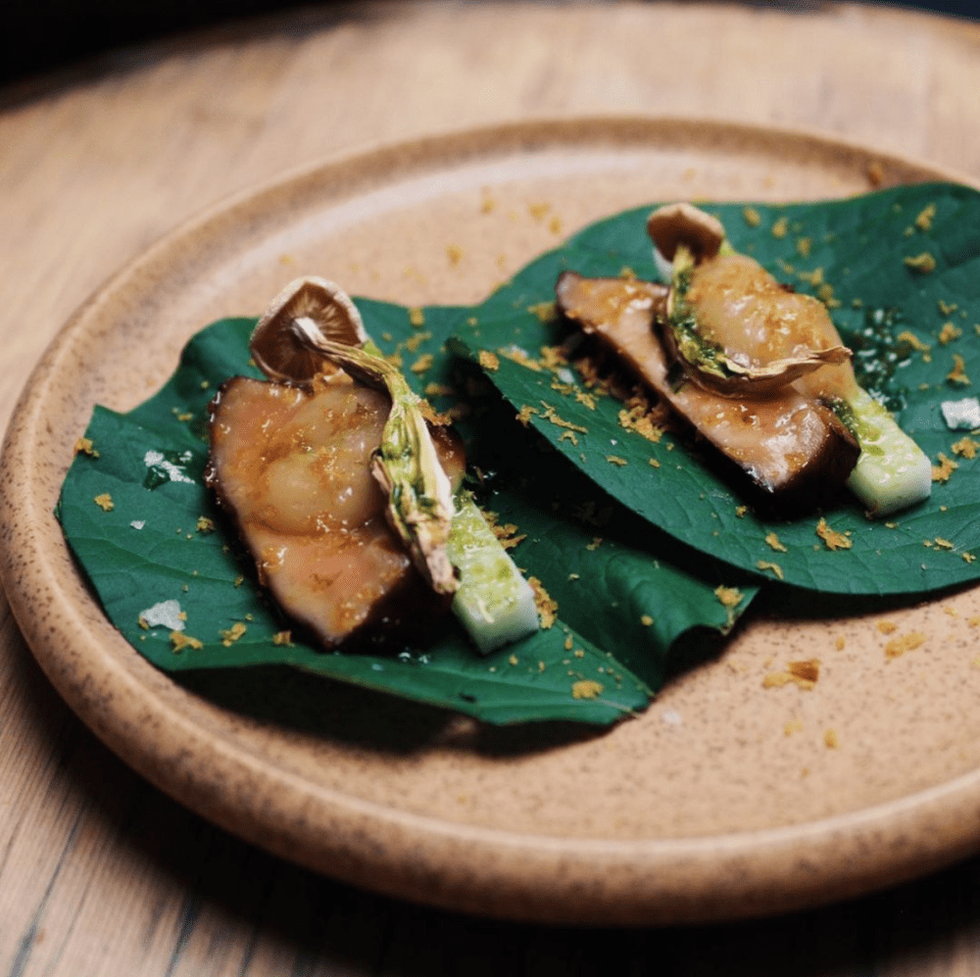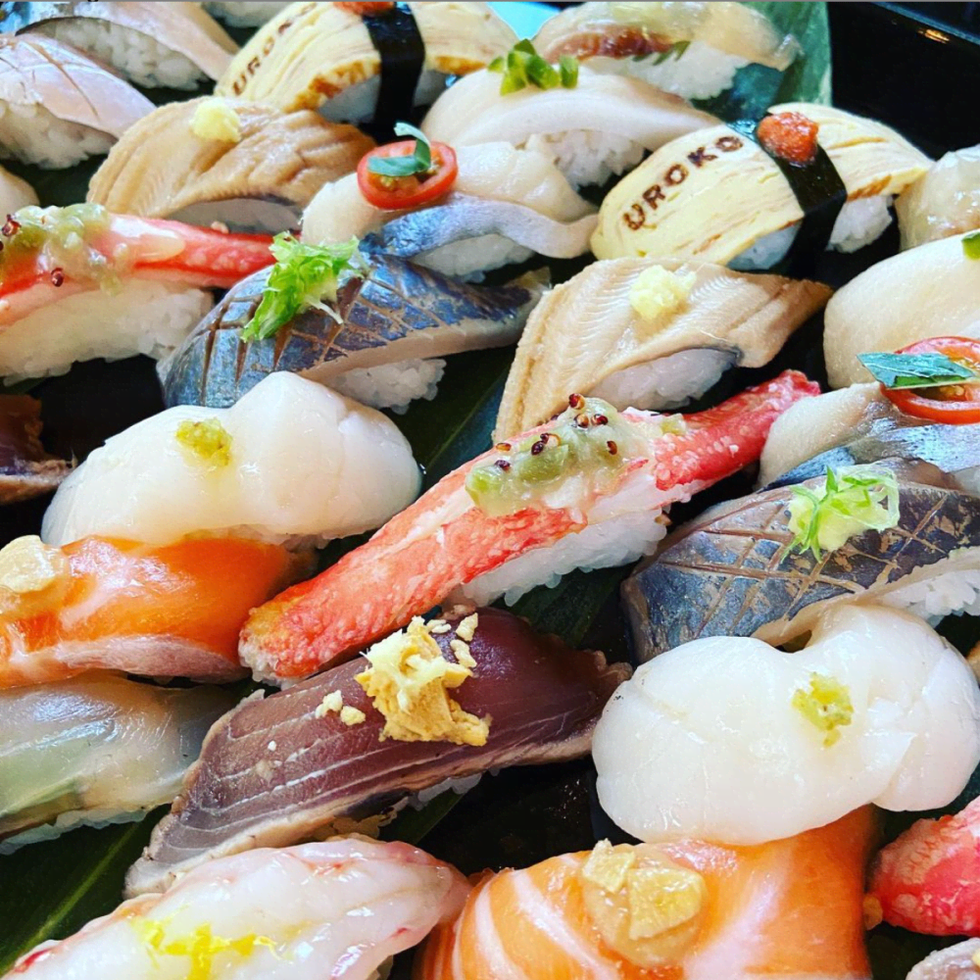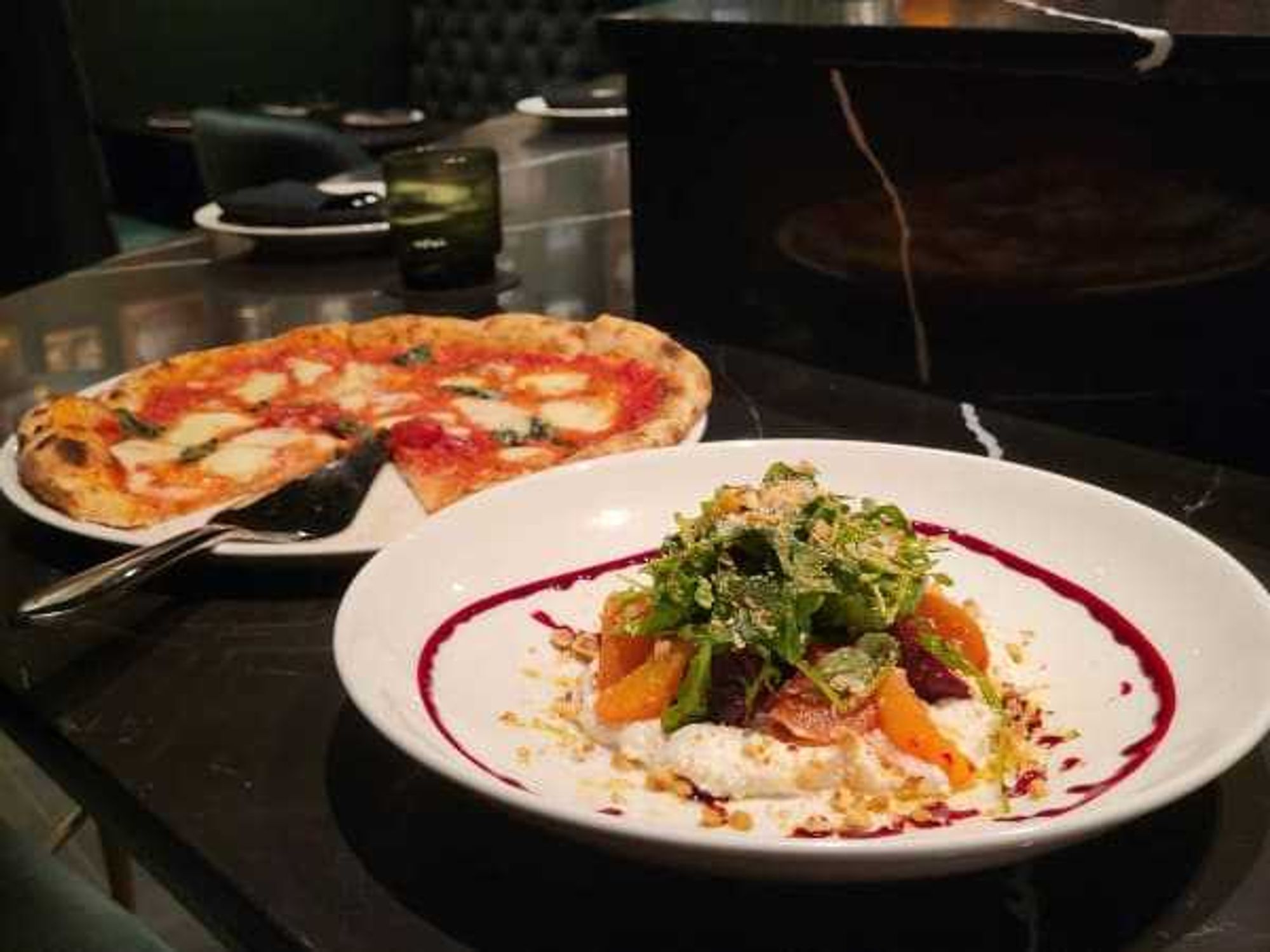Any way you slice it
Austin sushi restaurants hook adventurous diners with alluring omakase trend
If “omakase speakeasy” doesn’t sound like a distinctly Austin phrase to you, you might be from Los Angeles. There are far more sushi restaurants in this city than most people should reasonably expect, given its location and relative age.
But last year’s arrival of Sushi|Bar (the former pop-up turned more permanent speakeasy in question) further solidifies Austin’s reputation as a burgeoning sushi city with a twist.
Omakase is not really a menu item but a request to the chef — essentially, “I trust you.” The chef sends out a layered selection of items based on the diners’ taste, or the chef’s mood or inspiration.
The many-course meal of small bites can be pricey and intimidating to a casual sushi eater, but it’s worth it for the learning experience alone, especially if omakase is a whole different kettle of fish than the sushi encounters you’re used to. For a more seasoned diner, it’s a simple luxury that thrives on surprises and eliminates the effort of making the perfect order.
There are, theoretically, as many omakase restaurants in Austin as there are sushi restaurants that would rise to the challenge. Sushi|Bar follows a trend sweeping America — chronicled over the past five years by organizations including Vogue, MasterClass and Eater — committing to an omakase-inspired tasting menu as its sole offering.
Uniquely, chef Phillip Frankland Lee (frequent Food Network contest competitor best known for Top Chef) and his wife, chef Margarita Kallas-Lee, set this venture apart through its relative secrecy, LA inspiration, and local ingredients. It also offers a more choreographed experience that invites 10 guests in at once for a unified experience over two and a half hours.
“I think what separates us from [nearby omakase] restaurants is mainly that we’re not a restaurant as much as we are a sort of speakeasy counter within Bento Picnic,” says Frankland Lee. “It’s a bit more of what we call experientially driven fine dining.”
Calling from Bangkok, where the couple is opening a new outpost of the restaurant later this year, Frankland Lee mentions Otoko and Fukumoto as local inspiration back in Austin.
Otoko chef Yoshi Okai was the first person he invited as an admirer for a meal at the Austin bar, and Frankland Lee asserts that visiting Fukumoto is “like eating in Japan.” According to him, the accessibility that comes from the groundwork laid by Otoko and Austin’s most famous Japanese restaurant, Uchi, is what makes the sushi here so good. With more Austin restaurants paying for fishing shipments from LA, the cost declines. Being between coasts is not the sacrifice to quality many assume it is.
“If you want to argue — which is just splitting hairs — you’re getting fish fresher in Austin than you are in New York because it’s going to get to Austin in two hours instead of four hours,” Frankland Lee says. “I mean, give it a break.”
Otoko manager Billy Weston has been visiting other sushi restaurants in Austin, including Sushi|Bar, Uchi, and Soto, to see what other omakase offerings look like around the city. The upscale hotel eatery — which became one of the most solid founding Japanese institutions in Austin upon its opening at the South Congress Hotel in 2016 — offers kaiseki omakase, a similar multicourse meal that includes more than just sushi and follows a form with “metered placement to the flow of the meal,” according to the manager.
Weston believes Japanese food, and especially more curated experiences like kaiseki and omakase, are becoming more prevalent in Austin because of the city’s “transient population.” People moving or just visiting from other cities give restaurants opportunities to experiment, whether they stick to the traditional styles or adapt them into their own local flavor.
“There’s people who are outside of Japanese cuisine that are looking into that structure and format. I think it’s really interesting to see ... omakase-style places that are Mexican interior cuisine, and things like that,” Weston says.
Sushi|Bar is an example of exactly that kind of fusion.
“I started to learn that traditionally what separated one omakase from another was really the chef telling the story of their childhood and their neighborhood with the flavors,” explains Frankland Lee of the bar’s origin. “So I thought that’s the most authentic thing I can do is tell the story of my neighborhood, and I happened to grow up in the San Fernando Valley of Los Angeles.”
Uchi has been a trailblazer since its inception in 2003. In 2015, about when Otoko was opening, Time Out magazine named Uchi the top sushi restaurant in the United States. Concept chef Kaz Edwards of Uchi’s restaurant group Hai Hospitality attributes the lasting success to the restaurant’s responsiveness, both to the clientele and the chefs who have come and gone over the years. Omakase, in its flexibility, is the perfect way to meet diners where they are, without lowering standards.
“What I’ve always liked about our food is it really is a gateway into more traditional sushi,” Edwards says. “It really does allow somebody who is maybe apprehensive about trying raw food to take steps into getting to where they’re eating sashimi and things like that.”
Uchi’s reach is what builds the trust that is inherent in omakase, and spreading out its responsibility to other roles than just the chefs’ enhances it. It even places some trust in its servers, who offer selections based on their own training and what they can discern of a guest’s personal taste.
A publicist for Uchi describes the restaurant’s influence as “the six degrees of Uchi.” It would be hard, if not impossible, to work in the restaurant industry and not have an Uchi connection.
“Chefs, we bounce around from place to place. We try to get as much knowledge as we can from as many different people and within as many different cultures and ethnicities [as possible.] And that’s the same thing when we eat,” says Edwards. “The way that we’ve always looked at other restaurants is not competition, but it’s more like all these people are going to help us bring the industry up together.”
Like Weston and the Lees, he sees eating other chefs’ sushi as a way to stay connected.
In 2019 after 16 years at Uchi, one chef Masazumi Saio fulfilled his single degree of separation in opening Uroko. The East Austin restaurant offers temaki (hand rolls), sushi classes, and weekend omakase by reservation only. Unsurprisingly, Saio is almost comically unconcerned with competition, and simply wants to make great sushi, sourced from all over the world.
“For me, I try to make it as best as I can and after that, it’s up to the customer. People like us and the people will come; if people don’t like, they go to others,” says Saio.
Omakase dining is all about the unexpected, so whatever your feelings may be on trying something new, there are plenty of chefs in Austin who can lead you straight to what you’ll like. You can always ask if the chef cares to improvise, but for most of these experiences, make sure you look for reservations ahead of time.
To get in on the Sushi|Bar secret, join the waitlist on exploretock.com.




